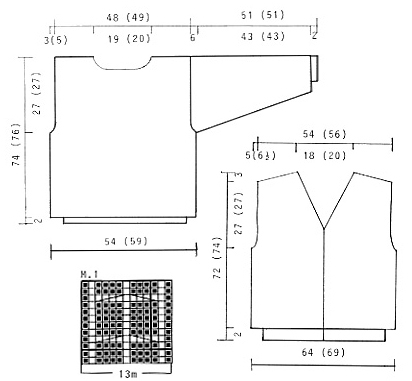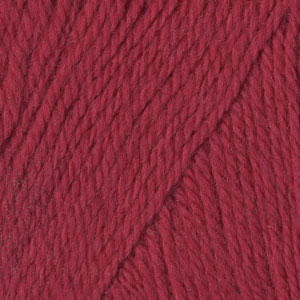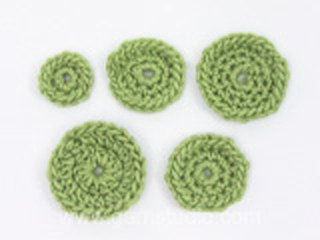DROPS 39-29 |
|||||||||||||
|
|
|||||||||||||
DROPS jumper and gloves in “Alpaca”, sleeveless jumper in “Ull-Flame” and crochet hat in “Alaska”.
DROPS 39-29 |
|||||||||||||
|
Knitting Tension: 18 x 22 sts on needle size 5 mm in pattern = 10 x 10 cm Garter st, back and forth on needle: K all rows. Garter st, in the round: K 1 round, P 1 round. Moss st: first row: K1, P1. Second row: P over K and K over P. Repeat second row. Rib: *K2, P2*, repeat from *-*. Pattern: *K 3 sts, 1 moss st*, repeat from *-*. Stripes: *12 rounds off-white/grey (1 thread of each colour), 2 rounds with double thread off-white*, repeat from *-*. Back and front piece: Knitted in the round with double thread Alpaca. Cast on 174-182 sts on circular needle size 3.5 mm with grey/off-white and work 4 rounds garter st, Change to needle size 5 mm and continue in stripe pattern (see above), at the same time inc 22-30 sts evenly on first round = 196-212 sts. Remember the knitting tension! When piece measures 47-49 cm cast off 4 sts each side for armhole and now complete each piece separately. Front piece: = 94-102 sts. Dec to shape the armhole on every other row: 2 sts 1-2 times, 1 st 2-3 times = 86-88 sts. When piece measures 66-68 cm cast off the middle 8-10 sts for neck and dec to shape the neckline on every other row: 3 sts twice, 2 sts 3 times, 1 st 1 time. Cast off remaining when piece measures approx 74-76 cm. Back piece: = 94-102 sts. Dec to shape the armhole as described for front piece = 86-88 sts. When piece measures 72-74 cm cast off the middle 30-32 sts for neck and dec 2 sts on neckline on next row. Cast off remaining when piece measures approx 74-76 cm. Sleeves: Cast on 36-40 sts on double pointed needles size 3.5 mm with grey/off-white and work 4 rounds garter st. Change to needle size 5 mm and continue in stripe pattern (see above), at the same time inc 6-2 sts evenly on round = 42-42 sts. At the same time after the garter st inc 2 sts mid under arm 27-27 times on every 3rd round = 96-96 sts. When piece measures 45-45 cm cast off 6 sts mid under arm and complete sleeve back and forth on needle. Dec to shape the sleeve cap each side on every other row: 5 sts 5 times. Cast off when piece measures 51 cm. Assembly: Join shoulders. Pick up approx 120 sts round the neck on double pointed needles size 4 mm with grey/off-white, P 1 round and then 6 cm in Rib and stripe pattern, change to double pointed needles size 3.5 mm and continue in Rib and stripes until collar measures 12 cm. Cast off. Set in sleeves. SLEEVELESS JUMPER: Size S/M - M/L Knitting Tension: 9 x 14 sts on needle size 9 mm in pattern = 10 x 10 cm Garter st, back and forth on needle: K all rows. Buttonhole: 1 buttonhole = cast of 3rd st from edge, cast on 1 new st on return row. Make buttonholes on right front piece when piece measures: 1-1, 13-13, 25-25, 37-37 and 49-49 cm. Pattern, right front piece: Work 5 P sts in the following places: When piece measures 10-12 cm, work 5 P sts 14-14 sts from mid front. When piece measures 20-22 cm work 5 P sts 7-7 cm from mid front. When piece measures 39-40 cm work 5 P sts 16-16 cm from mid front. When piece measures 51-53 cm work 5 P sts 11-11 sts from armhole. When piece measures 66-68 cm work 5 P sts 4-4 sts from armhole. Pattern, left front piece: Work 5 P sts in the following places: When piece measures 12-14 cm, work 5 P sts 24-24 sts from mid front. When piece measures 30-32 cm work 5 P sts 15-15 cm from mid front. When piece measures 40-42 cm work 5 P sts 8-8 cm from mid front. When piece measures 47-49 cm work 5 P sts 6-6 sts from armhole. When piece measures 69-71 cm work 5 P sts 5-5 sts from armhole. Pattern, back piece: Work 5 P sts in the same places as right and left front pieces put together. Right front piece: Cast on 33-35 sts (incl 1 edge st towards side) on needle size 9 mm. Work 4 rows garter st and continue in stocking st and pattern (see above) with 2 sts towards mid front in garter st throughout (= front band). Remember buttonholes! When piece measures 40-42 cm work 4 rows garter st on the outermost 5-5 sts towards armhole. Piece now measures approx 42-44 cm. Cast off 3 sts for armhole and continue in stocking st and pattern with 2 sts towards armhole in garter st. Dec to shape the armhole inside the 2 garter sts on every other row: 1 st 3-4 times = 27-28 sts. When piece measures 50-50 cm dec to shape the neckline inside front band on every 3rd row: 1 st 11-12 times. At the same time when piece measures 69-71 cm dec to shape the shoulder towards neckline on every other row: 8 sts 2 times. All sts are now cast off, piece measures approx 72-74 cm. Left front piece: Cast on and work like right front piece, but reversed and in pattern as described above. Back piece: Cast on 60-64 sts (incl 1 edge each side) on needle size 9 mm. Work 4 rows garter st and continue in stocking st and pattern (see above). When piece measures 40-42 cm work 4 rows garter st on the outermost 5-5 sts towards armhole each side. Piece now measures approx 42-44 cm. Cast off 3 sts for armhole each side and continue in stocking st and pattern with 2 sts towards armhole in garter st. Dec to shape the armhole inside the 2 garter sts each side on every other row: 1 st 3-4 times = 48-50 sts. When piece measures 68-70 work 4 rows garter st on the middle 20-22 sts. At the same dec to shape the shoulder towards neckline as described for front piece. At the same time when piece measures 70-72 cm cast off the middle 16-18 sts for neck and work 2 sts towards neckline in garter sts until finished measurements. All sts are now cast off, piece measures approx 72-74 cm. Assembly: Join shoulders and sew side seams. Sew on buttons. GLOVES: Size: Medium Knitting Tension: 24 sts x 30 rows on needle size 3 mm in Rib = 10 x 10 cm Rib: *K2, P2*, repeat from *-*. Pattern: See diagram, diagram is seen from RS. Right glove: Cast on 83 sts on double pointed needle size 3 mm and work pattern as follows: 18 sts Rib (beg round with P2 and insert a MT between these 2 sts), M.1 (= mid upper hand), 52 sts Rib (beg and finish with P2). When piece measures 24 cm dec 24 sts evenly on round (do not dec in M.1) = 59 sts. Continue with Rib on either side of M.1 (beg with P2). Now measure piece from here! When piece measures 2 cm continue for thumb as follows: inc 1 st on both sides of MT and inc 1 st on both sides of these 2 sts on every other round 6 times = 14 sts for thumb (incorporate the inc sts in Rib as you go along). Now put the 14 sts + 1 st either side = 16 sts on a thread and cast on 2 new sts behind these 16 sts = 59 sts on round. When piece measures 11 cm inc 1 st on M.1 = 60 sts, at the same time continue in Rib on all sts (finish M.1). Work next round as follows: work the 2 sts cast on over 16 sts on thread, work 21 sts, put 13 sts on thread for little finger, cast on 1 new st and work the remaining 24 sts. Work 4 rounds on these 48 sts. Now put the new st and 16 sts on either side of this on a thread. Continue for fingers as follows: Index finger: Work 15 sts and cast on 1 new st = 16 sts. Work 4 cm, cast off. Middle finger: Work 8 sts from under hand and cast on 1 new st, work 8 sts from upper hand and cast on 3 sts towards index finger = 20 sts. Work 4 cm, cast off. Ring finger: Work 17 sts and cast on 3 new sts towards middle finger = 20 sts. Work 4 cm, cast off. Little finger: Pick up 13 sts from thread and cast on 3 new sts towards ring finger = 16 sts. Work 4 cm, cast off. Thumb: Pick up 16 sts from thread and cast on 4 new sts behind these = 20 sts. Work 5 rounds, cast off. Left glove: Like right glove, but reversed. Inc for thumb at the end of second needle. Work little finger as follows: work 24 sts, put 13 sts on thread, cast on 1 new st and work 21 sts + the 2 inc sts over thumb. HAT: Size: S/M-M/L To fit head circumference: 50-52 cm Crochet Tension: 12 dc x 12 rows on crochet hook size 5 mm= 10 x 10 cm Crochet tip: Beg all rounds with a sl st to replace first dc and finish all rounds with a sl st. Crochet 4 ch and from a ring with a sl st. Round 1: 6 dc in ring. Round 2: 2 dc in each dc = 12 dc Round 3: *2 dc in first dc, 1 dc in next dc*, repeat from *-* = 6 inc = 18 dc Round 4: *2 dc in first dc, 2 dc*, repeat from *-* = 24 dc Now continue to inc like this with 1 extra dc in between each inc on every round until piece measures 6-8 cm from the centre. Now inc in the same way on every other round until piece measures 9-11 cm from the centre. Continue without inc until piece measures 17-19 cm and now dec 10 dc evenly on round (dec by skipping 1 dc). Crochet 2 rounds with 1 dc in each dc and continue for brim as follows: *2 dc, 2 dc in next dc*, repeat from *-*. Crochet 3 rounds without inc and crochet next round as follows: inc 1 dc in every 3 dc. Crochet 8 rounds without inc, finish last round with a sl st in dc and cut thread. |
|||||||||||||
Diagram explanations |
|||||||||||||
|
|||||||||||||

|
|||||||||||||
|
Have you made this or any other of our designs? Tag your pictures in social media with #dropsdesign so we can see them! Do you need help with this pattern?You'll find tutorial videos, a Comments/Questions area and more by visiting the pattern on garnstudio.com. © 1982-2024 DROPS Design A/S. We reserve all rights. This document, including all its sub-sections, has copyrights. Read more about what you can do with our patterns at the bottom of each pattern on our site. |
|||||||||||||











































































